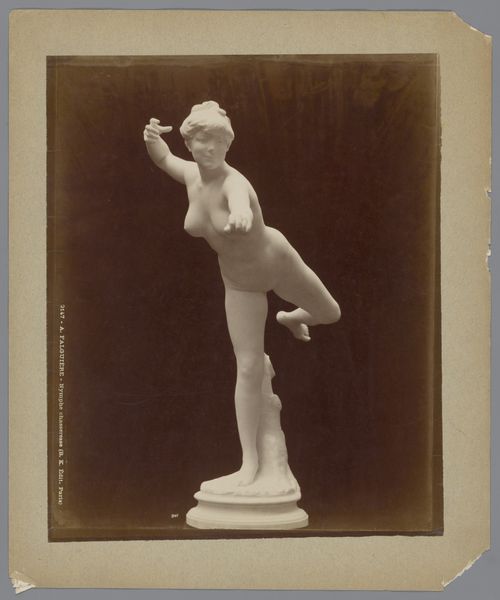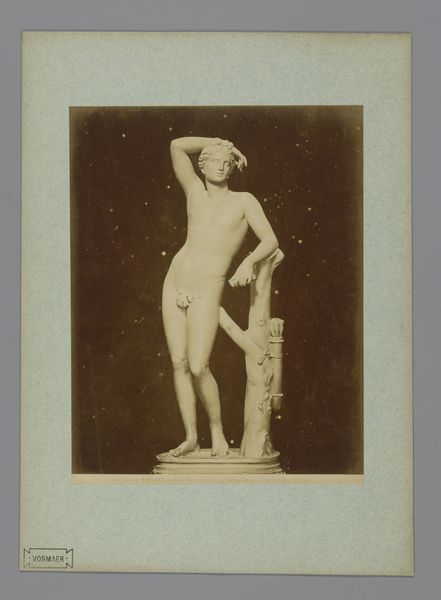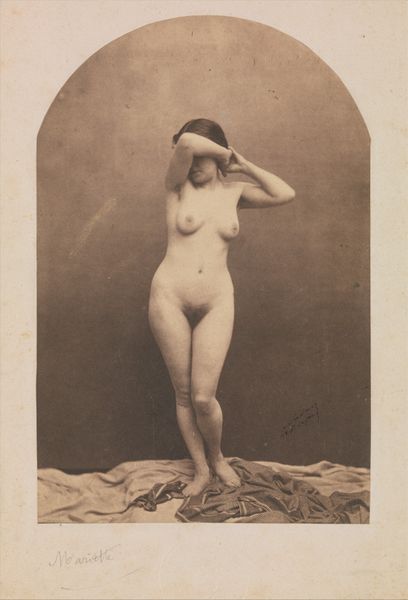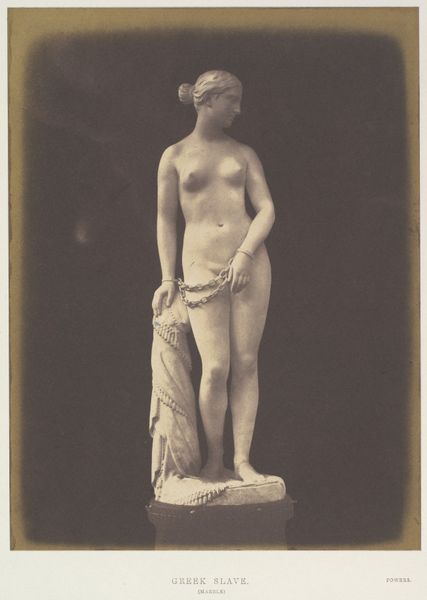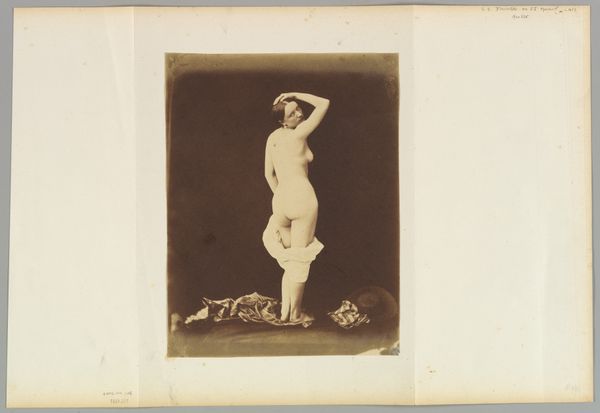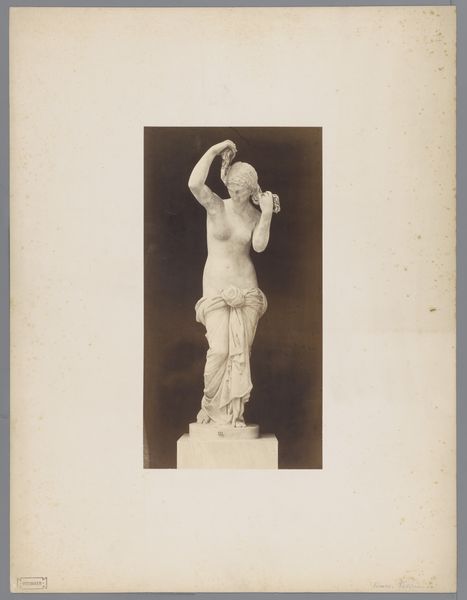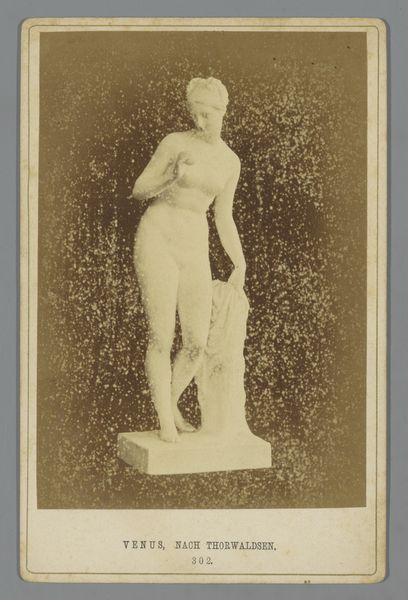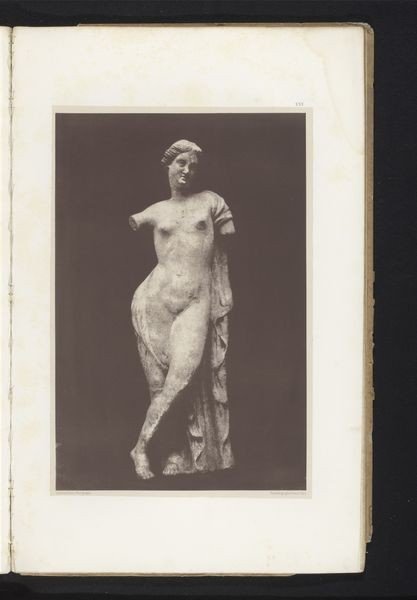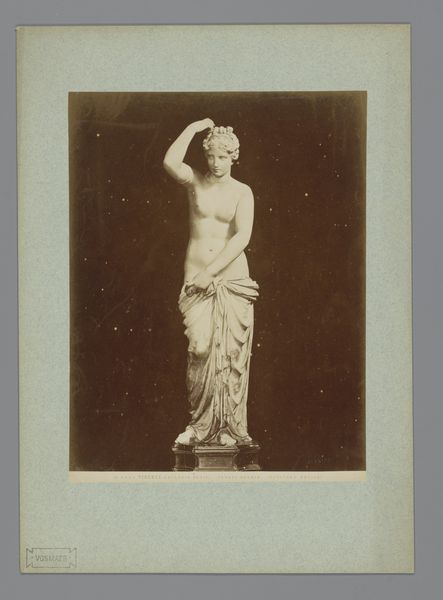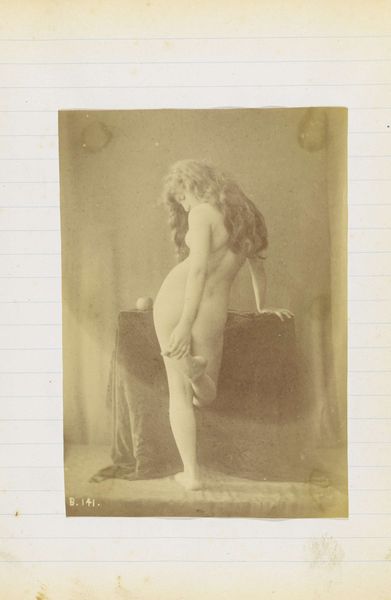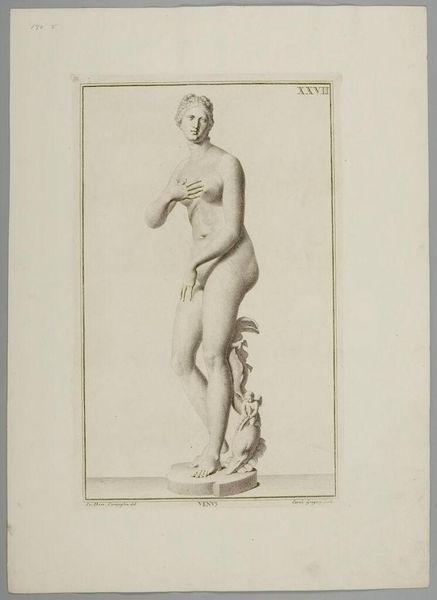
photography, sculpture
#
portrait
#
classical-realism
#
photography
#
sculpture
#
academic-art
#
nude
Dimensions: height 314 mm, width 230 mm
Copyright: Rijks Museum: Open Domain
Curator: This is a photograph of a sculpture entitled "Beeld van Diana door A. Falguière," dating from around 1875 to 1900. What strikes you initially about this representation, Editor? Editor: There's a classical elegance, definitely academic. The contrapposto stance, the soft light playing on the form... it evokes a sense of serenity but also poised strength. What can you tell me about the material presence? Curator: Well, while we’re viewing a photograph, the artwork captured is actually a sculpture. The image is printed on photographic paper using what I believe to be albumen prints, common at that time because of its clarity and relative ease of manufacture. The original sculpture was likely rendered in plaster or marble. The circulation of such photos speaks to industrializing artistic dissemination. Editor: Precisely! Note how the photographer has carefully controlled the lighting. It's not just documenting a sculpture; it's interpreting it. See how the chiaroscuro accentuates the roundness of the limbs and the smoothness of the torso. How does this photographic treatment play into ideas about ideal form? Curator: Interesting you mention ideal forms, which reminds me that Falguière's artistic output aligned seamlessly with the artistic ideals championed by the academy. Moreover, such idealized imagery served a consumption-based society hungry for luxury commodities in the Victorian era. These images were objects available to mass audiences for purchase. Editor: A keen observation. Let's consider Diana herself. As the Roman goddess of the hunt, the moon, and the natural environment, how do these themes inform the visual choices made? Notice the gesture of her raised arm; it signifies both command and vulnerability, doesn’t it? Curator: Indeed. By transforming mythological subject matter into sculpture, Falguière tapped into popular interpretations of Greek and Roman classics at the time. This image showcases more than aesthetic enjoyment: it embodies social stratification and historical art consumption of ancient cultures interpreted by the 19th-century western world. Editor: That raises further thoughts about cultural context and commodification. Thank you for unveiling new insights into Diana! Curator: My pleasure. Analyzing how artistic processes mirror economic realities reshapes my perceptions of cultural legacies.
Comments
No comments
Be the first to comment and join the conversation on the ultimate creative platform.

